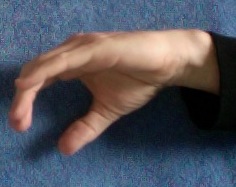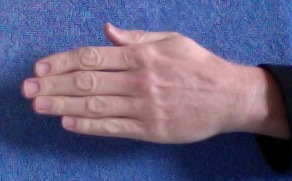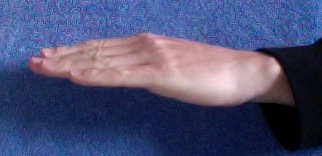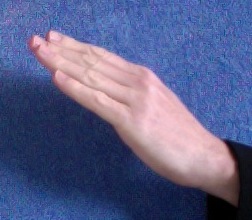info here
info here
A scale is the principle notes used in a song placed in order. Solfege syllables assigned to the notes of the scale help you learn to sight sing. Here are the solfege and hand signs used for the notes of the major scale.

|
|

|
|

|
|

|
|

|
|

|
|

|
|

|
The vowels of the solfege syllables reinforce the function of each scale degree. DO and SOL tend to be grounding pitches, using the ‘oh’ vowel to bring out the stability of these notes. The bright vowel ‘ee’ of MI and TI point to the notes above them, while the taller vowel ‘ah’ of FA and LA help these notes point to the note below them. These ‘tendency resolutions’ are particularly true when supported with specific harmony that will be explained much later.
You should practice identifying the solfege of notes, well before you learn about accidentals, key signatures, and scales.
In the exercise (swipe left), the first note is always shown for you, and you are asked to figure out the solfege of the other notes from there.
Try to develop speed while retaining accuracy. Skills you develop now will lay the foundation for more proficient sight reading later. Check out the example below.
After you enter the solfege correctly, you will be prompted to sing each note. If singing is difficult for you, turn sound= to ‘on.’ Then, while you are identifying the solfege for each note, you can sing it along the provided sound. This gives you practice in the first part before being evaluated in the second part. Of course, playing and singing the prompts is also super helpful and important.
warm-ups on solfege Going up the scale, or banching into some of the solfege warm-ups on the video. On the slower exercises, make sure everyone is showing the hand signs so that they can do the next part.
Call and response leader (teacher or student) calls a melodic fragment on solfege, then the group answers.
Read my hand signs begin with teacher showing and students following, then as partners, then as section leaders. In partners, student help each other get teh sign corectly and independently, and sing it correctly. Duets shown by teacher are great. Duets shown by students are hard. Cacophony of different groups doing differnt things is good- student’s feel less exposed in that environment.
Circle singing 2-4 groups in the room. First group starts a pattern on solfege. Subsequent groups, one at a time, layer in a pattern that works with existing texture. Teacher or student leader(s) are needed to get each pattern going. Of course, all patterns are on solfege.
The video (found under the menu in the top left banner) has these ideas geared more for teachers than for students.